Hue has no shortage of famous monuments, but there is a very special architectural system - where each tile, each step carries its own story about its dynasty: That is the mausoleum of the Nguyen Dynasty kings.
Each mausoleum has its own language: some places emphasize balance and the philosophy of yin and yang, some places clearly show the East-West fusion, some places stand out with open spaces, to inspire poetic composition. From space, materials, to layout... all are facts for visitors to visit, learn, and explore more deeply about the Nguyen Dynasty eras.
Not only a resting place, the Nguyen Dynasty Mausoleums are also works that clearly reflect the thinking of power, aesthetics, and personality of each emperor.
Minh Mang Mausoleum - The place of Yin and Yang harmony
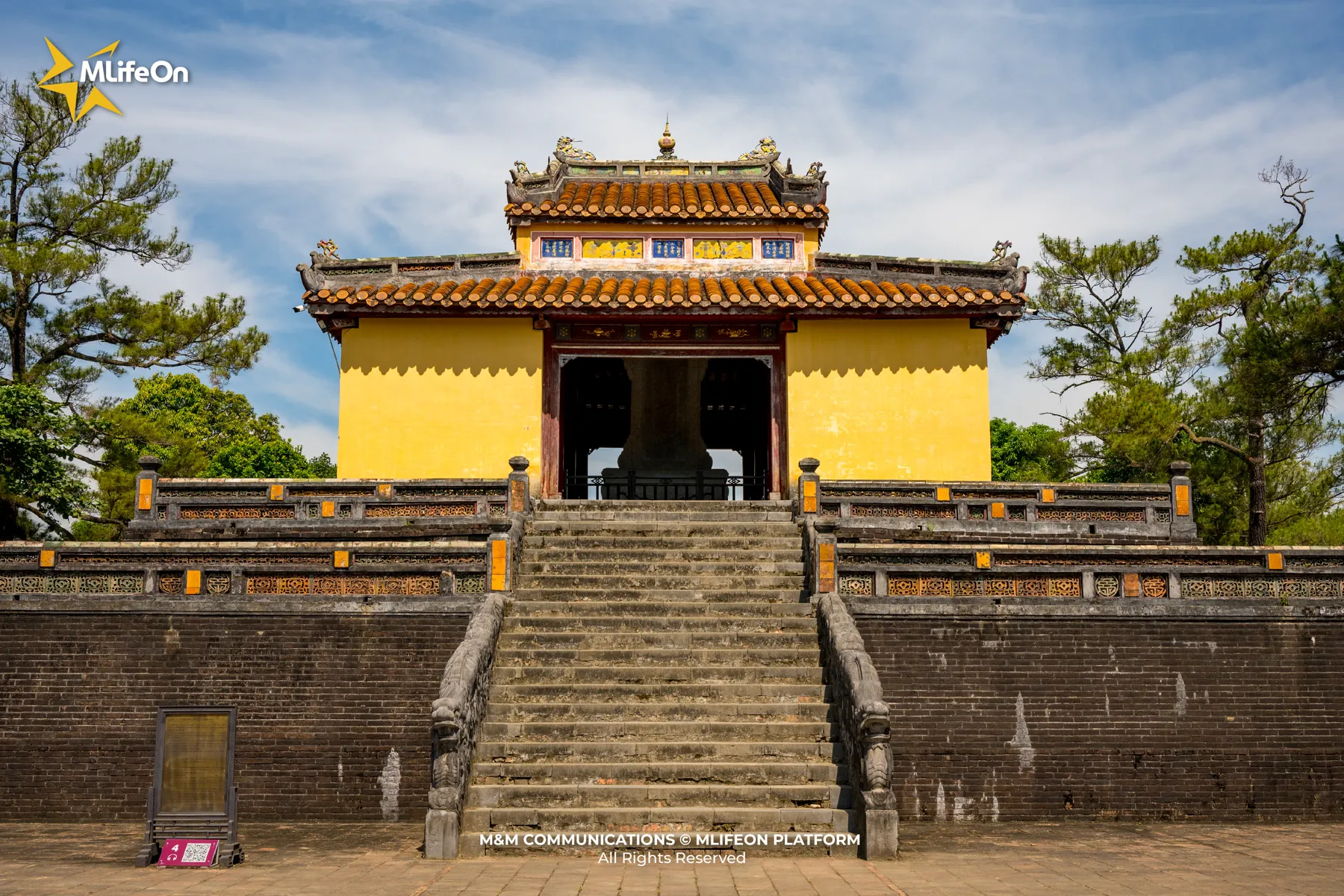
Mentioning the place where the philosophy of yin - yang, heaven - earth is expressed most clearly and strongly among the Nguyen Dynasty Mausoleums, people will immediately think of Minh Mang Mausoleum.
Hidden between Hieu Son Mountain and Huu Trach River, Minh Mang Mausoleum appears like a symphony of nature and architecture.
The space here is not noisy, but so peaceful that even footsteps become cautious. From the side gate, you will see a long spiritual axis, leading through successive layers of space: Bai Dinh yard, Bi Dinh, Sung An Palace, Trung Minh Lake, Minh Lau, and finally Buu Thanh - the resting place of King Minh Mang.

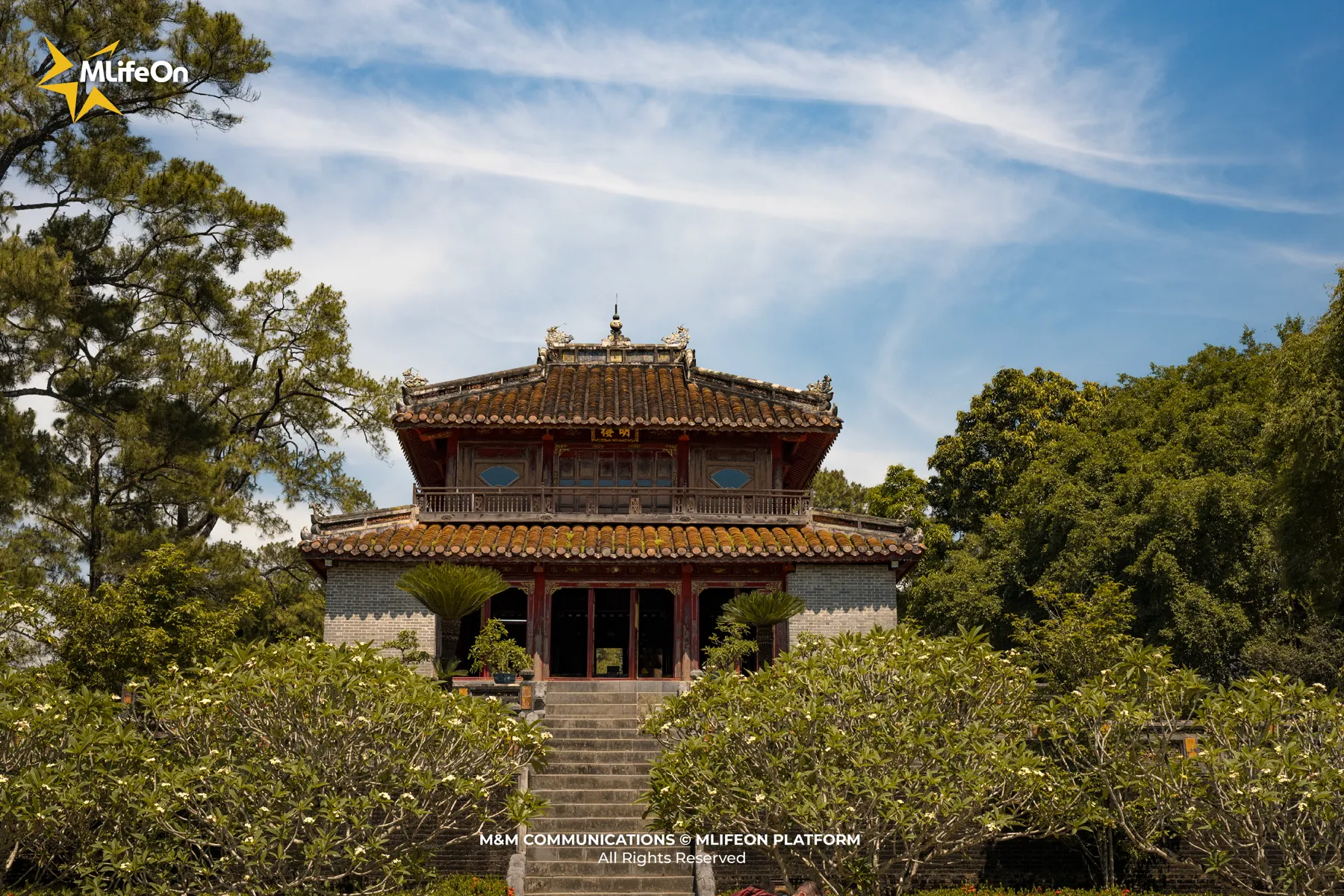
Each structure is placed in the right position, in the right proportion, and according to Feng Shui philosophy. The curved bridges across the lake, the curved roofs like bird wings, the stone steps leading up to the hill - all seem to tell a story about a king who loved poetry, loved philosophy, and longed for a peaceful era.
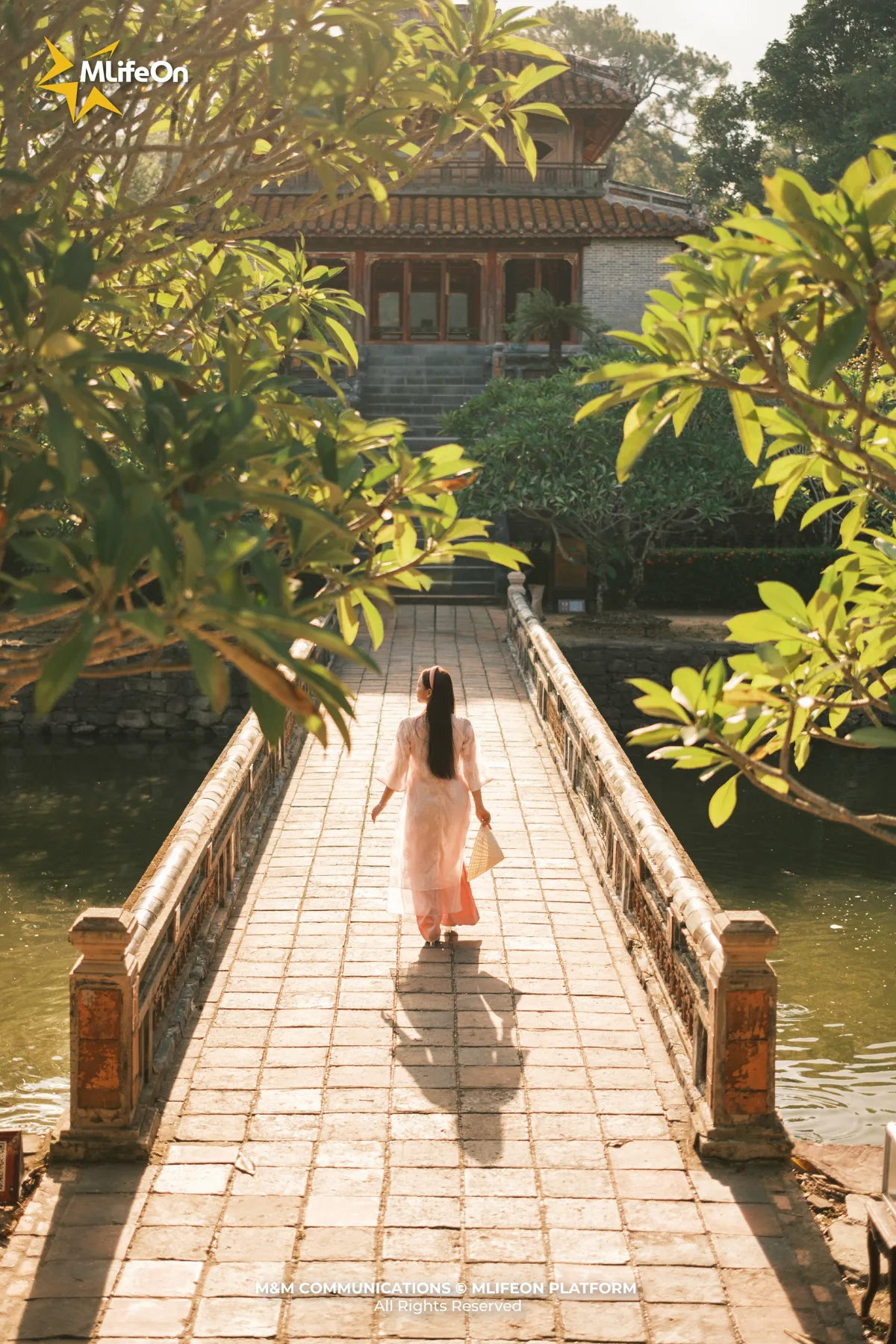
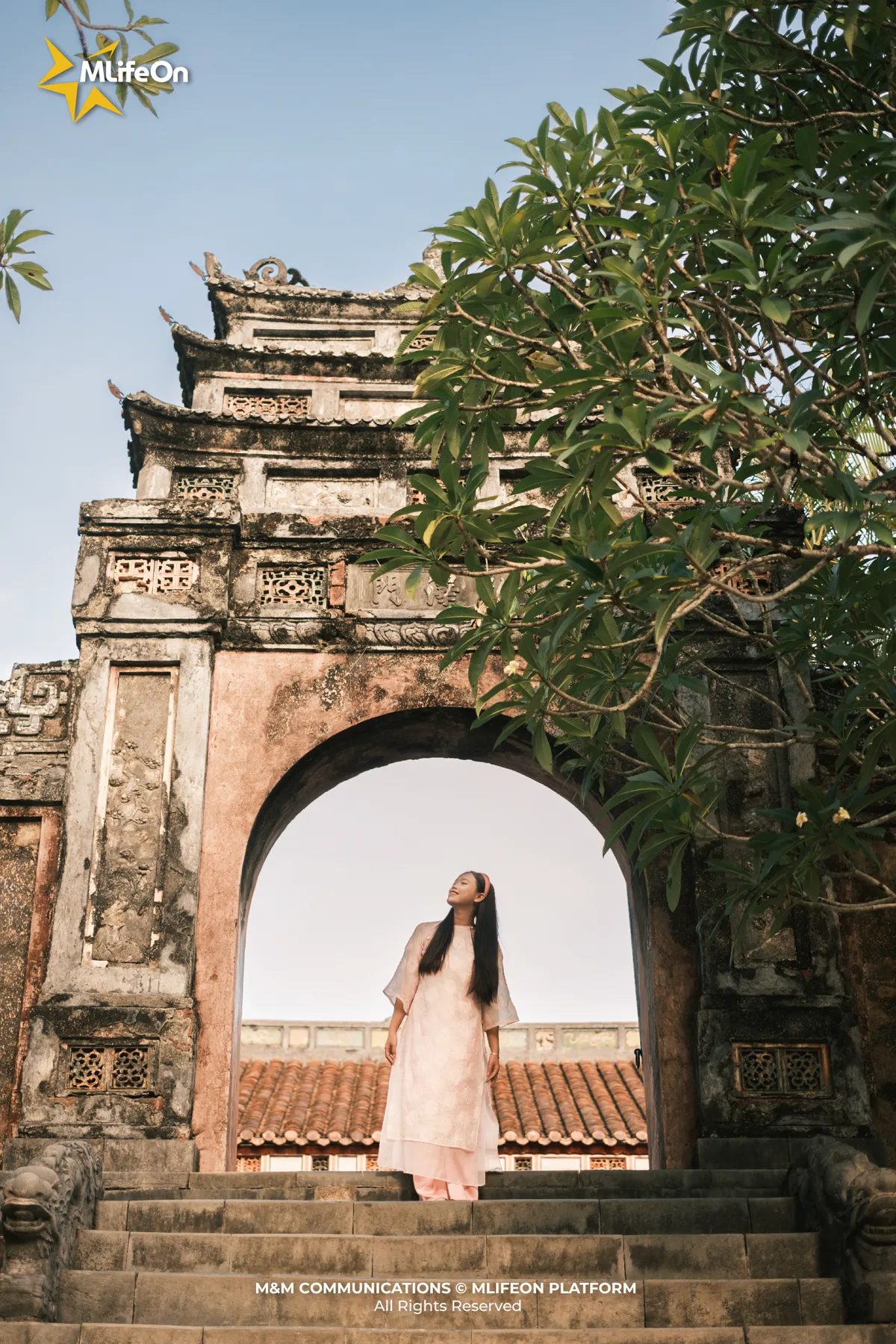
Khai Dinh Mausoleum - A bold blend
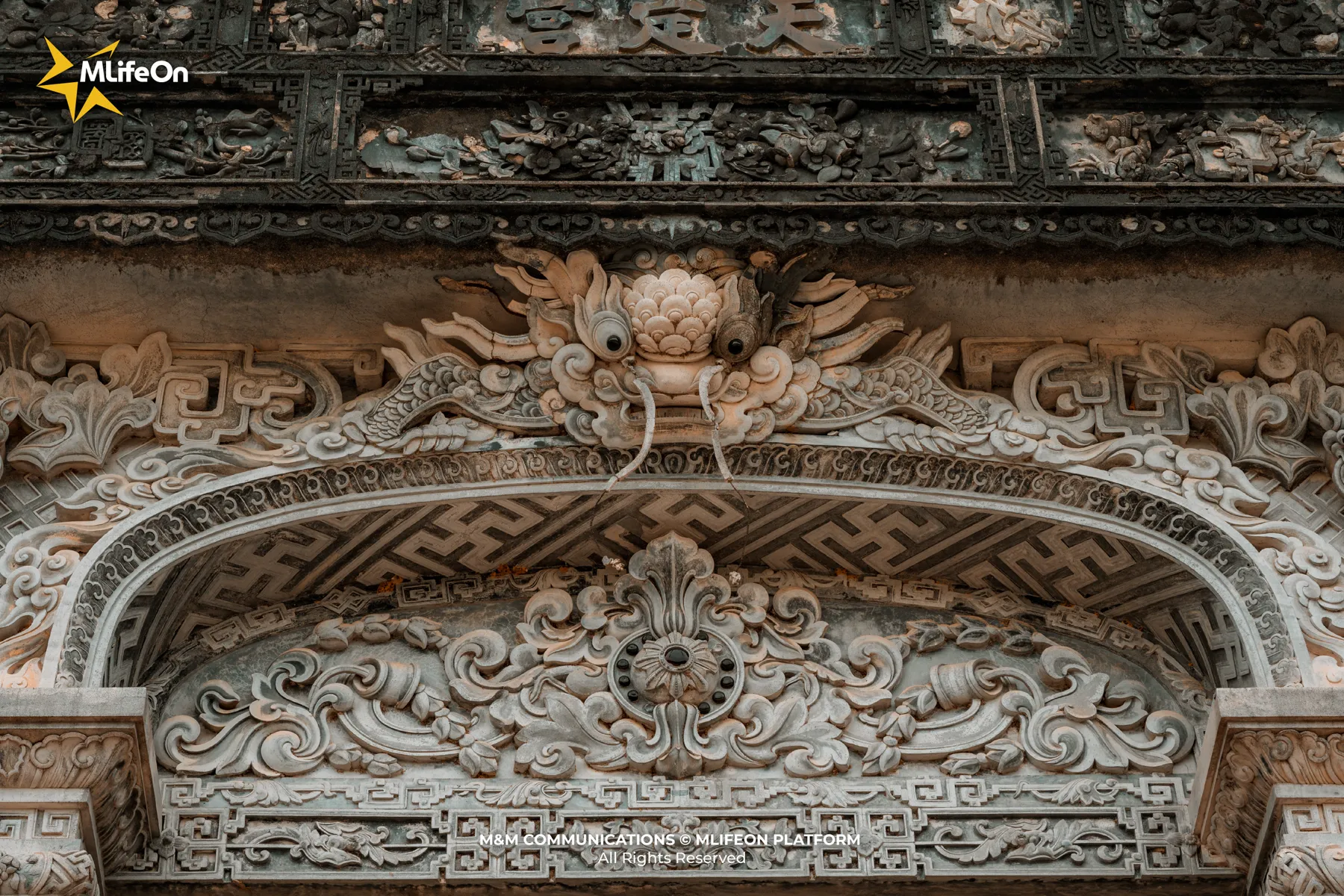
In contrast to the classic and balanced Minh Mang Mausoleum, Khai Dinh Mausoleum is a bold work of beauty in blending.
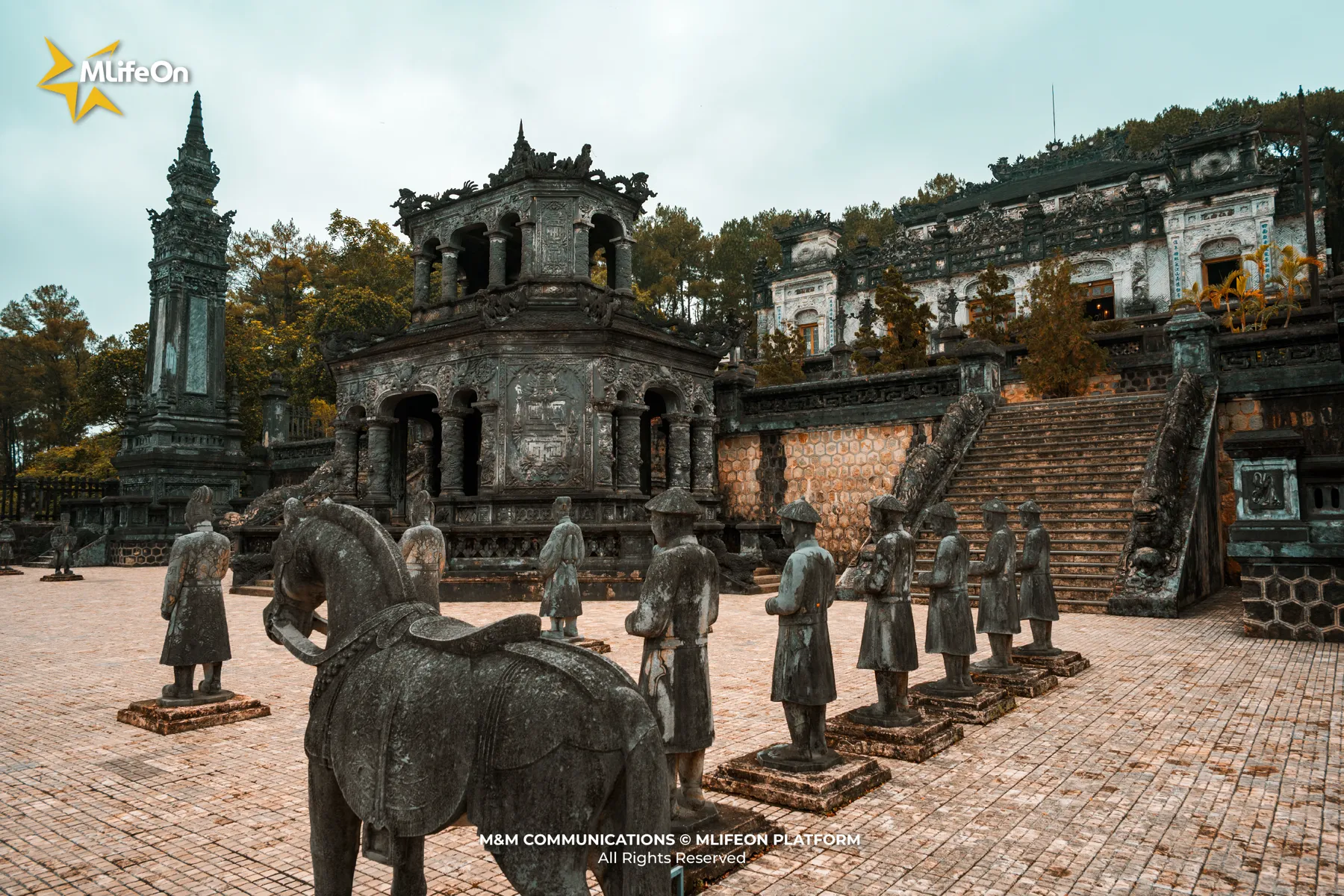
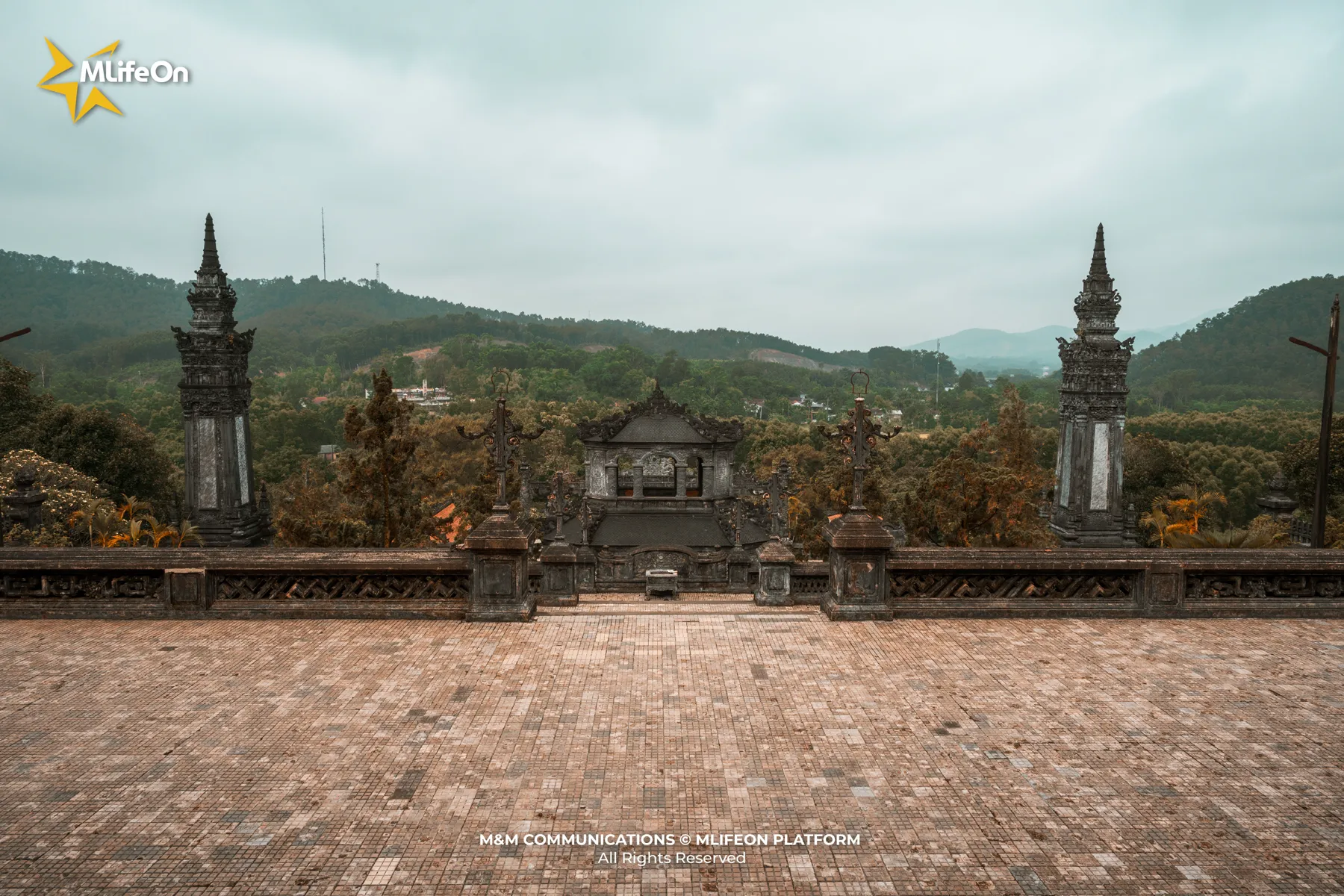
Located on the slope of Chau Chu mountain, the mausoleum appears like a miniature palace, where East and West coexist in every detail. From Tam Quan gate to Thien Dinh palace, you will pass 127 stone steps, like a journey into a world of sophistication. The porcelain mosaic walls, the ceiling painted with dragons hidden in the clouds, the gilded king statue sitting majestically in the middle of the palace - all will overwhelm you.
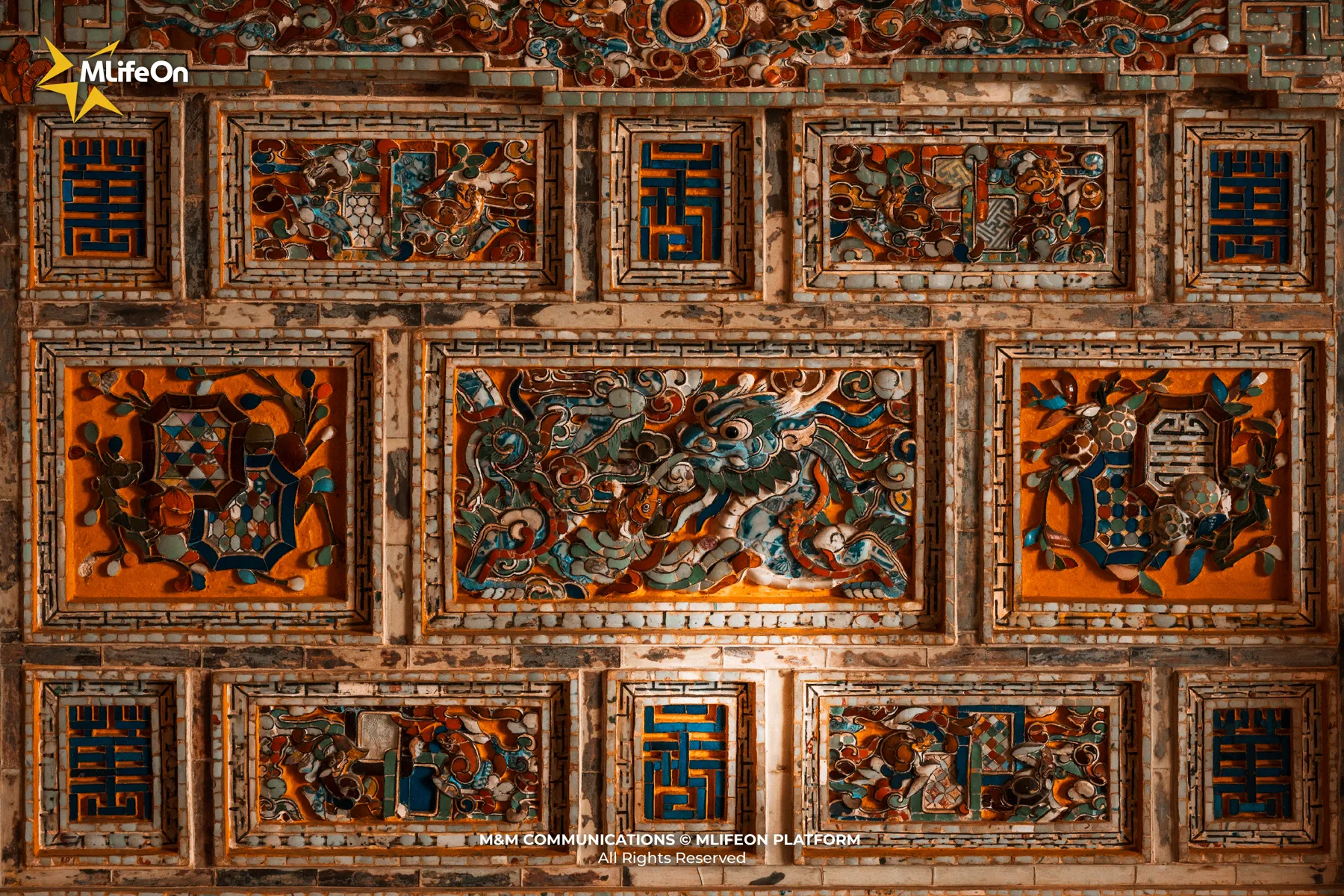
Porcelain mosaic walls
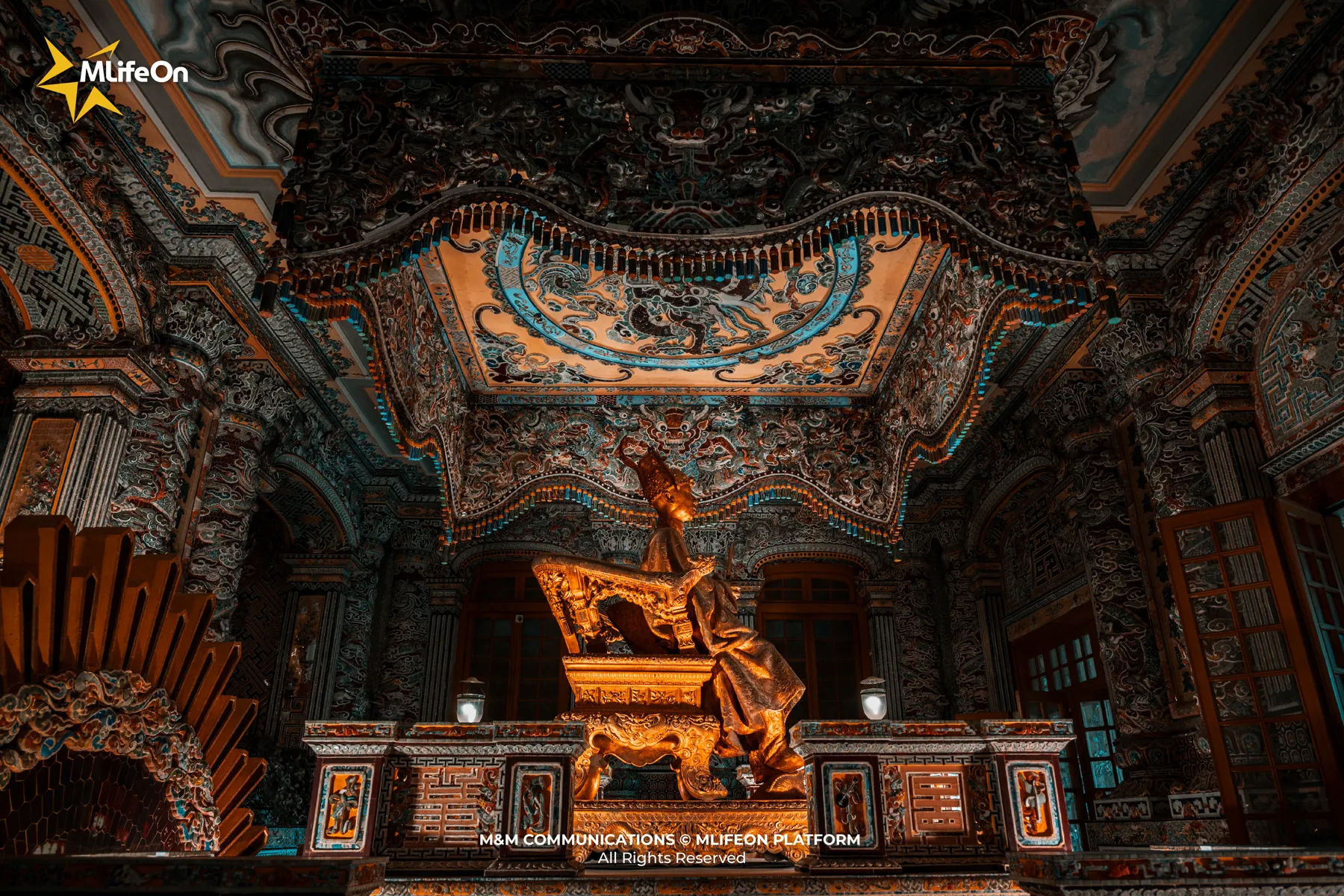
Alt text: Gold-plated king statue
Khai Dinh Mausoleum is not large, but every corner here is a work of art. It not only reflects the aesthetic taste of the last king who built his tomb, but also marks a period of transition - where the Nguyen Dynasty stood at the crossroads of tradition and modernity, of national identity and imported foreign elements.

Tu Duc Mausoleum - The place where a poet's soul is kept

If Minh Mang Mausoleum stands out for its harmony, Khai Dinh Mausoleum is a blend, then Tu Duc Mausoleum is a peaceful and dreamy nostalgia. Located in the middle of a pine forest in Thuong Ba village, the mausoleum appears like a quiet garden, where nature and architecture blend in absolute tranquility.
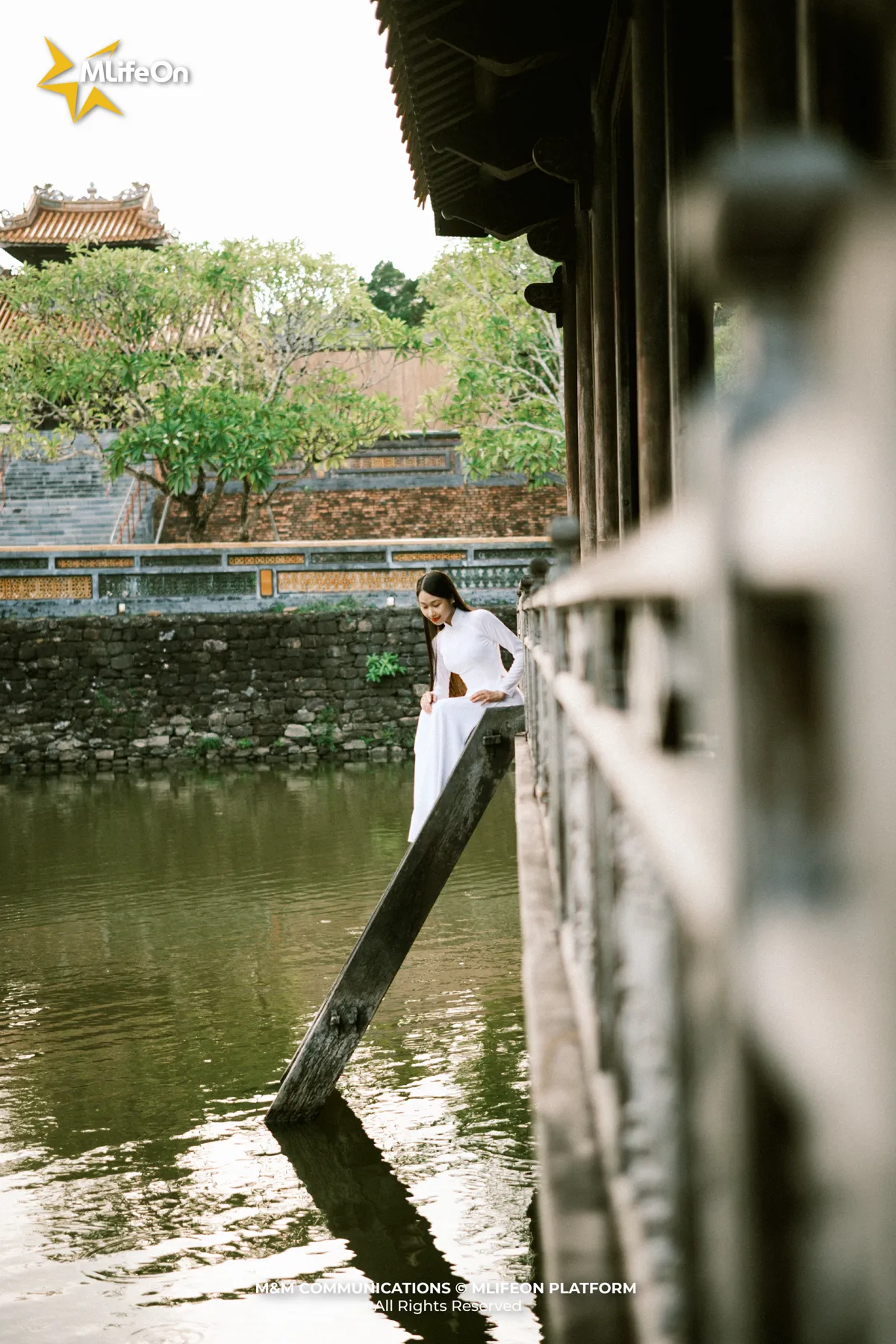

This space is not only for resting, but also used to be the place where King Tu Duc lived, worked and composed. The lake, small island, watchtower, shrine, theater… are all arranged like a poetic resort.
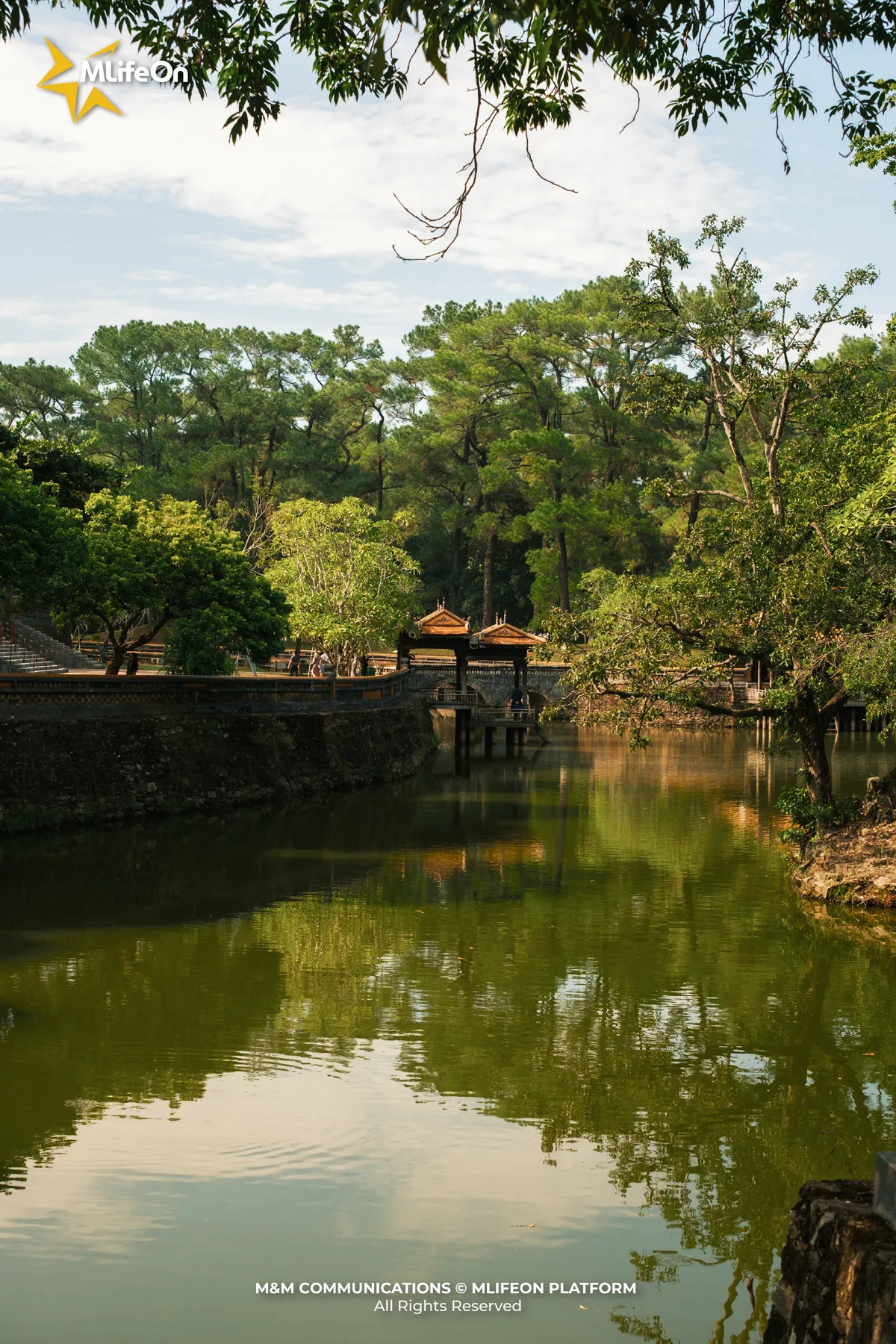
At Khiem Cung Gate, you can imagine a lonely king sitting looking at the lake, letting his thoughts drift with the wind. The stone stele is engraved with the poem “Khiem Cung Ky” written by the king himself, like a thoughtful confession about responsibility and loneliness of the head of a dynasty.
Tu Duc Mausoleum does not impress visitors with its grandeur. It touches people with its delicate, gentle and profound beauty - a place for nostalgic souls.

Thieu Tri Mausoleum - Outstanding for its simplicity and privacy
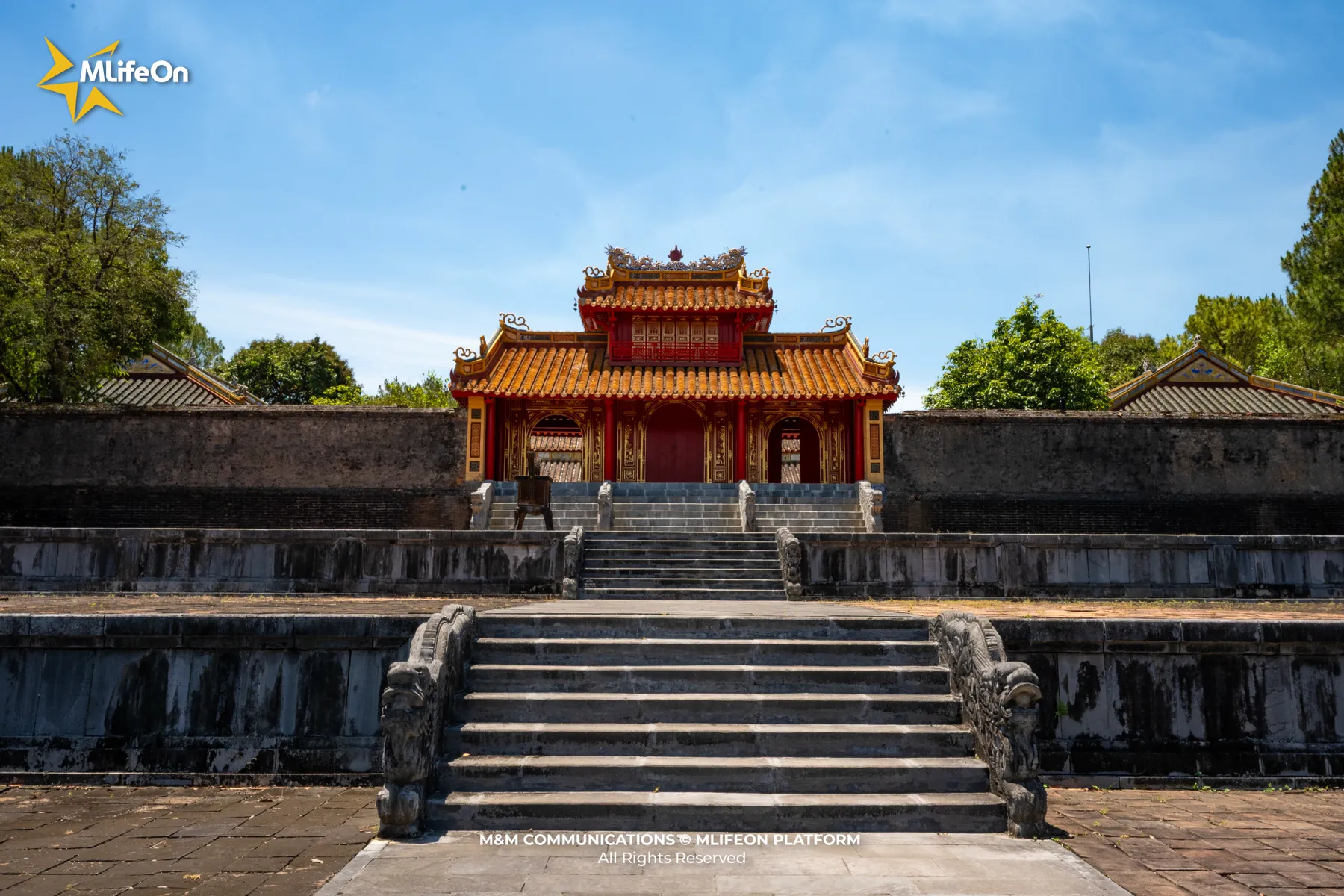
Thieu Tri Mausoleum, also known as Xuong Lang, is often overlooked in the journey to explore the Nguyen Dynasty's Mausoleums. But it is this modesty that makes this place special. Not as massive as Minh Mang Mausoleum, not as elaborate as Khai Dinh Mausoleum, Thieu Tri Mausoleum has a quiet, discreet beauty - reflecting the true character of the third king of the Nguyen Dynasty.

Located in the Cu Chanh area, the mausoleum was built in the "mountain-viewing-water" position, with its back leaning against the mountain and its face facing the river. The architecture here is not too complicated, but still maintains the necessary solemnity. The main structures such as Bai Dinh, Bi Dinh, the shrine and Buu Thanh are all arranged along the vertical axis, creating a sense of lightness and coherence.
What makes Thieu Tri Mausoleum special is the connection between space and emotion. There are no overwhelming details, but every step makes people want to stop longer, to listen to the sound of the wind through the trees, to feel the silence of a bygone era.
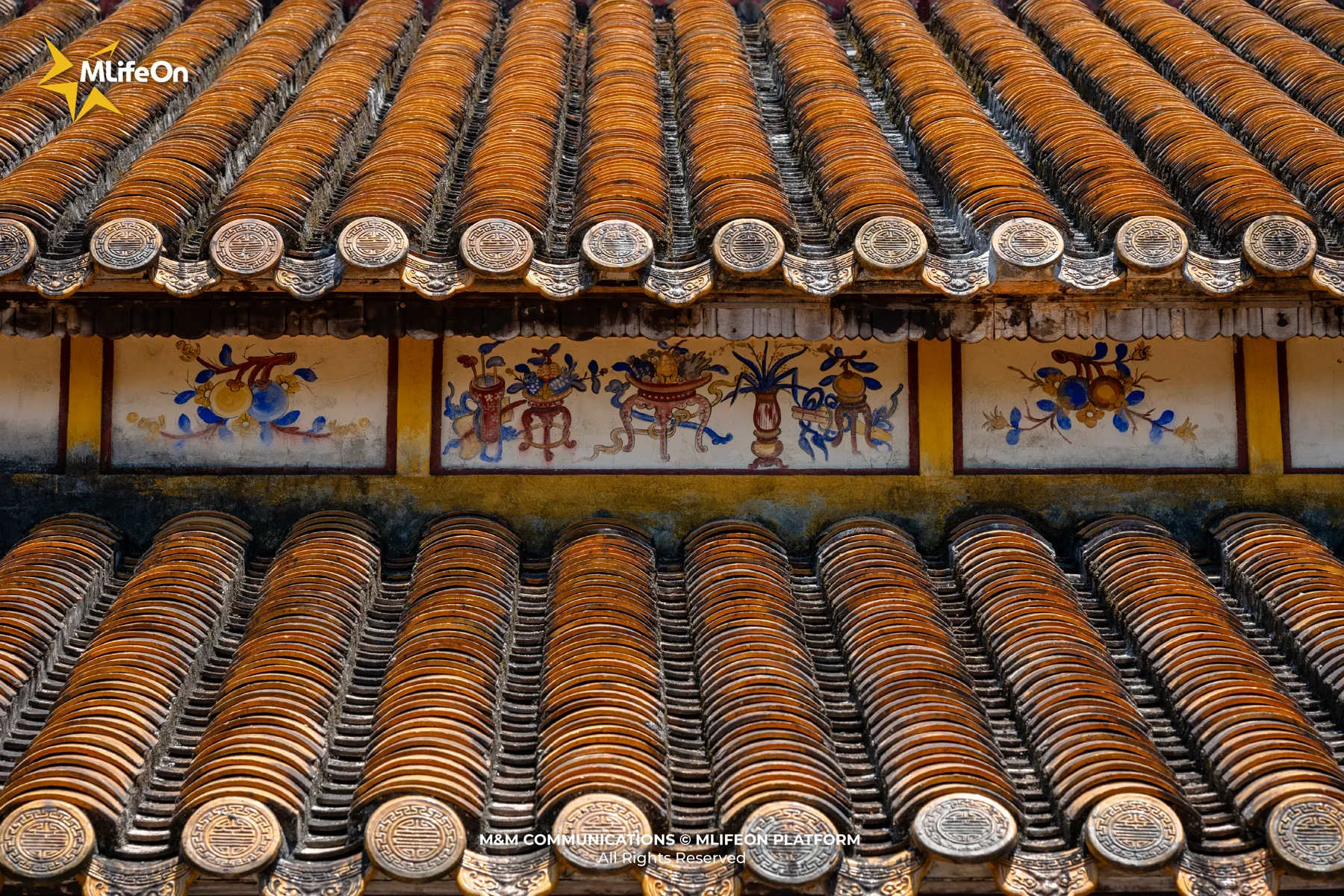
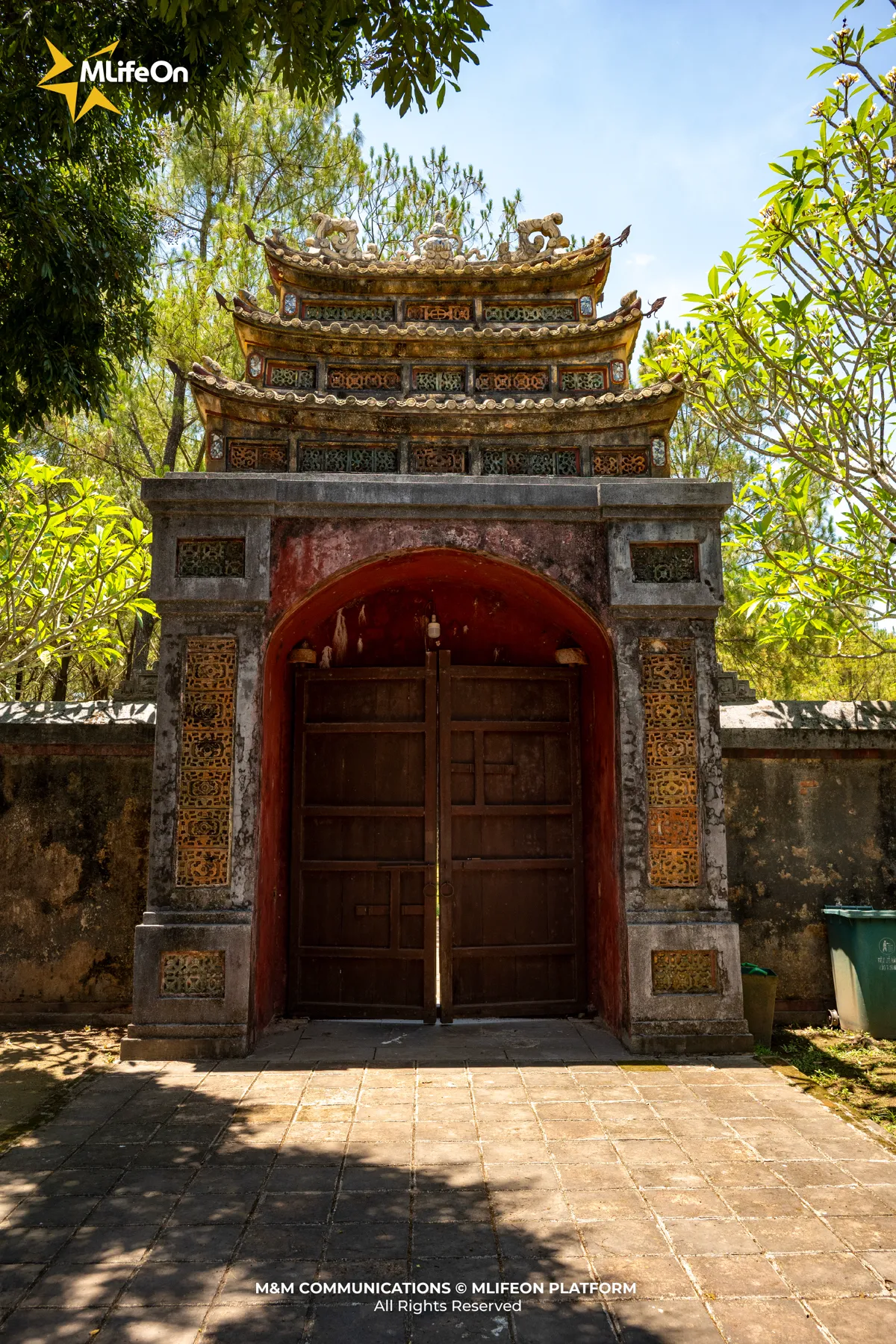
Conclusion
Each Nguyen Dynasty Mausoleum is a separate chapter in the stone history of the ancient capital of Hue. Whether it is the serenity of Minh Mang Mausoleum, the sophistication of Khai Dinh Mausoleum or the poetry of Tu Duc Mausoleum, all of them reflect a part of the mentality of the kings who once ruled the country.
Walking among those mausoleums, you are not only admiring the architecture, but also listening to the whispers of history. And in a moment, you will realize: power will eventually turn to dust, only art and aspiration will last forever.
—----
CREDIT:
- Photography: Luan Nguyen
- Content: Giang Huynh
- Design: Phuong Nguyen





















